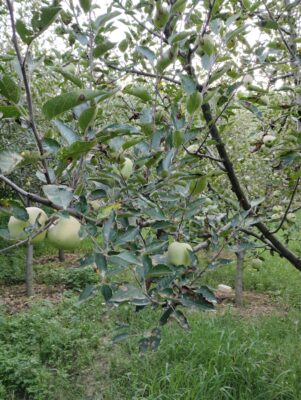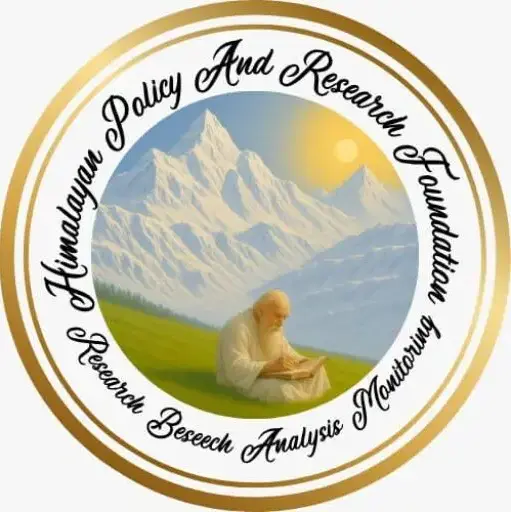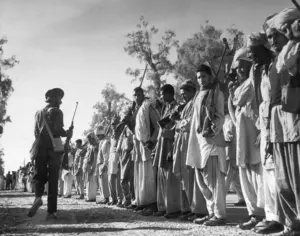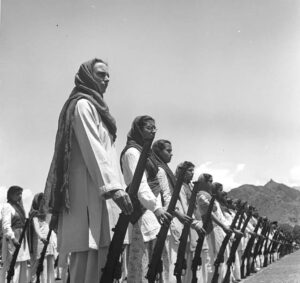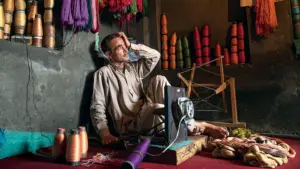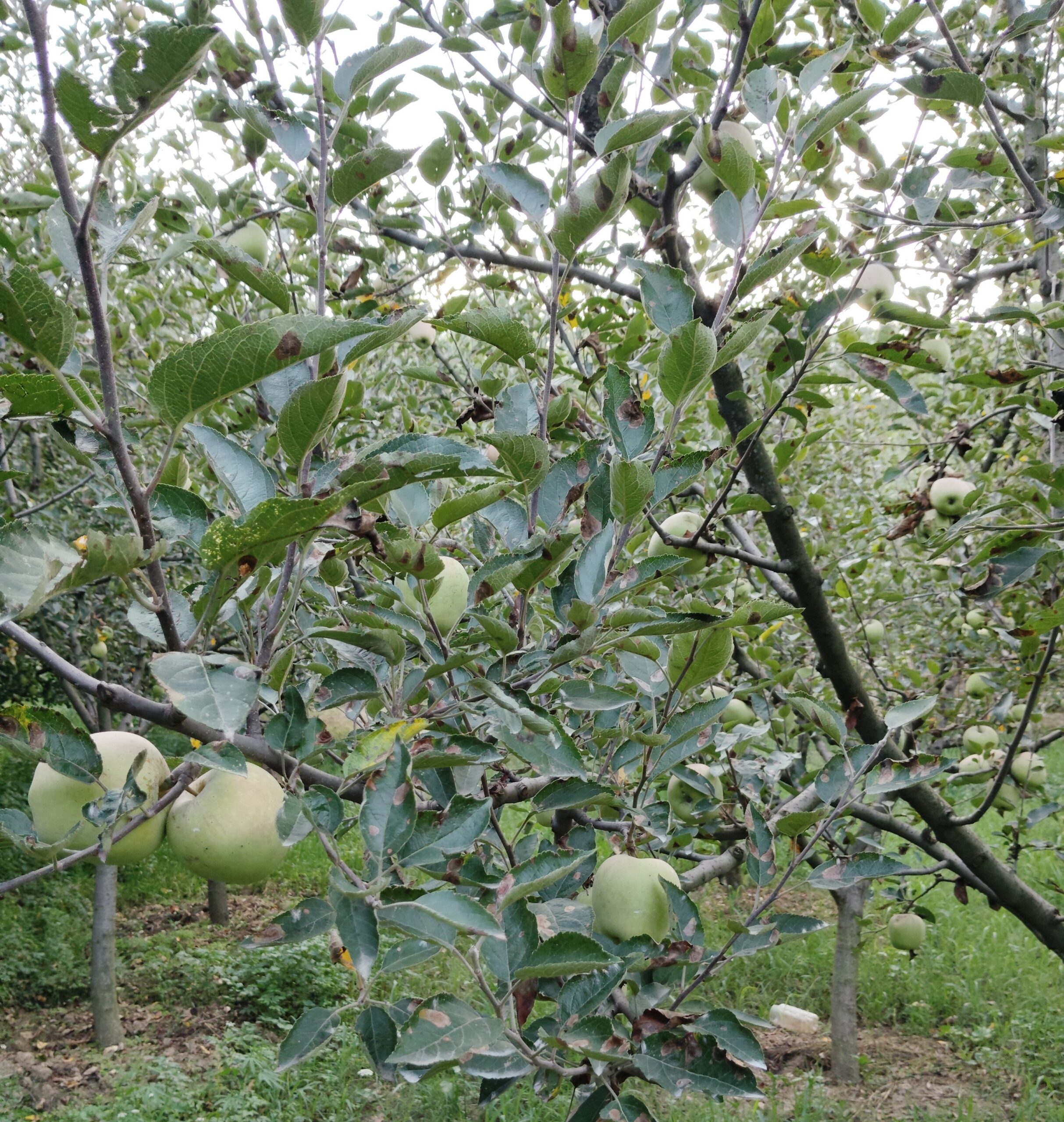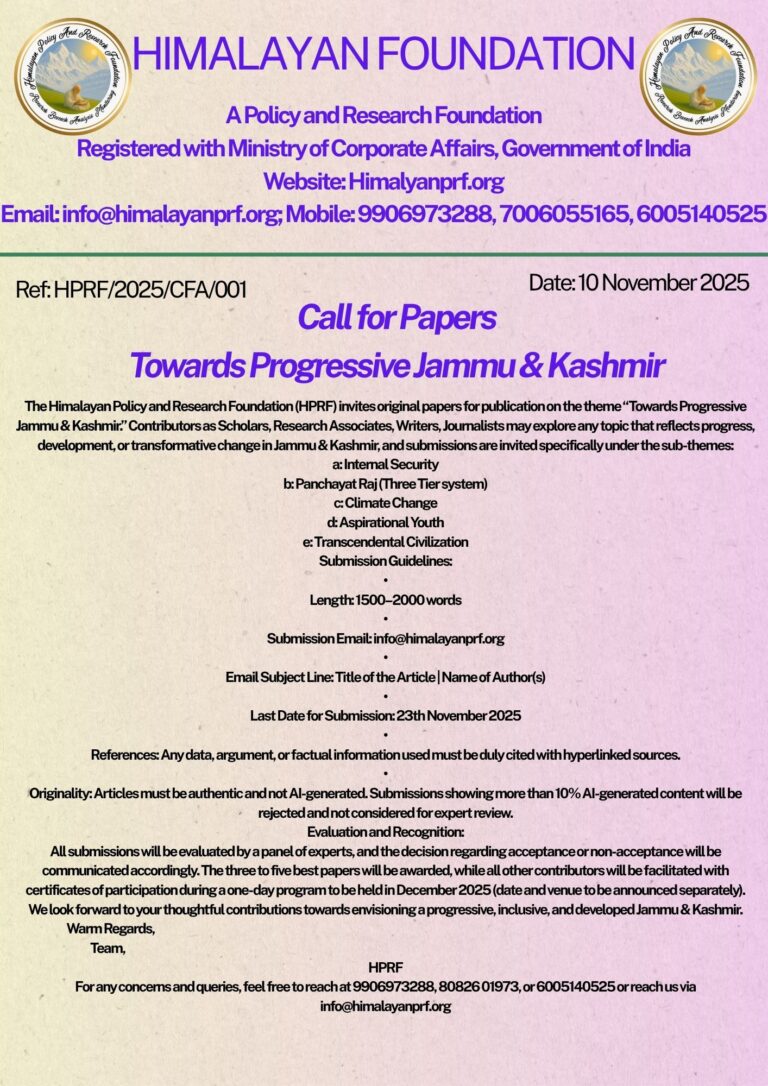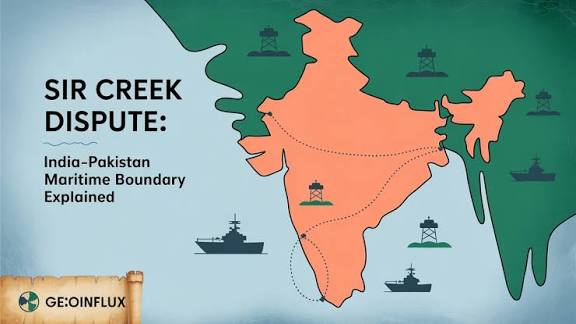By: Dr Zahid (Freelance Researcher)
In the orchard economies of Kashmir, trees often outlive certainties. They stand tall through the rise and fall of seasons, of hopes, of governments. But in recent years, the farmer beneath those trees—whose life once moved with the cadence of blossom and harvest—has begun to falter. Something elemental is changing, not in the biology of apples or almonds, but in the political economy that surrounds them. Horticulture in Kashmir is not just experiencing a crisis of yield; it is undergoing a slow collapse of meaning.
What was once the proud spine of Kashmir’s rural economy is now buckling under the combined weight of climate volatility, infrastructural deficit, and market failure. This article, grounded in field observations and interviews across three horticulturally intensive districts, argues that the Kashmir Valley’s horticulture industry is caught between structural abandonment and policy tokenism. It still sustains, but barely. It flourishes on the margins, but only as a memory of what once was—and what could have been. For generations, horticulture has anchored the Valley’s rural economy, shaping not only its material life but also its rhythms, relationships, and self-perception. Yet today, this sector—once spoken of with pride—is marked by a strange silence. Not collapse, but fatigue. Not rebellion, but retreat. Something deeper than productivity has begun to decline.
This study is based on fieldwork conducted in district Pulwama. Conversations with over a dozen orchardists, ranging from smallholders to mid-level growers, reveal a sector that has been allowed to drift—sustained less by state support and more by habit, by memory, by inertia. On the surface, horticulture continues to perform. Growth rates of production have remained modestly positive across decades. But this surface hides more than it reveals. The area under cultivation is declining, the yield remains stagnant, and prices have become volatile. The crisis is not simply agrarian—it is existential.
One begins to hear it in the words of orchardists like Ghulam Hassan, a 56-year-old grower from Awantipora Pulwama:
“The tree is still bearing, but our hope is not. What we grow does not feed us. It haunts us. Each season feels heavier than the last. What used to be a harvest is now a burden.”
(Darakht ab bhi phal deta hai, lekin umeed khatam ho rahi hai. Jo ugatay hain, woh guzara nahi deta, bas ek bojh ban gaya hai. Har saal peechlay saal se zyada bhaari lagta hai).
His orchard, planted by his father decades ago, has begun to feel like a burden. Not because the fruit has failed, but because the system around it has. Apples—the backbone of Kashmir’s horticultural output—now suffer from their own success. Bumper production in recent years has failed to translate into higher income. On the contrary, overproduction, unregulated markets, and insufficient cold storage have ensured that abundance leads to distress.
Kashmir produces over 25 lakh metric tons of apples annually. But the cold storage capacity available is barely 2 to 3 lakh metric tons. This mismatch is not a logistical gap; it is a policy failure. Without adequate facilities to hold produce and time their
sales, farmers are left at the mercy of market cycles. Prices crash during peak season. Traders exploit the glut. Middlemen profit. And the grower, after a year of labour, is often forced to sell at rates below cost. In Murran Pulwama, a young orchardist named Muneer Ahmad opens a storage room filled with unsold crates:
“I spent around ninety thousand on pesticides, fertilizers, and labour. My earnings this year didn’t even recover half of it. And you ask why youth are leaving? How do I explain this to my younger brother who wants to migrate to Delhi for a job?”
(Main ne iss saal naweed, dawaayi, mazdoori mein 90 hazaar lagaaye. Wapas aadha bhi nahi aya. Phir log kehte hain ke naujawan kyun shehr jaate hain? Main apne chhotay bhai ko kya jawab doon, jo Delhi mein naukri dhoond raha hai?)
What makes the situation more dire is that this local distress is being compounded by global currents. Imported apples from various countries, often subsidized and cheaper, flood Indian markets at the very time Kashmiri harvests arrive. Their presence depresses prices further. No tariffprotection. No procurement buffer. No structural response. In Rajpora, Farooq Lone—a second-generation apple grower—calls it,
“We are not competing with Iran. We are being sacrificed to it. It is not trade. It is betrayal. The government lets foreign fruit destroy the market while our own produce rots.”
(Hum Iran se muqaabla nahi kar rahay, humein Iran ke naam pe qurbaan kiya jaa raha hai. Yeh tijarat nahi, dhoka hai. Sarkar doosray mulkon ka phal laati hai, aur hamara yahaan sad jaata hai).
And he is not entirely wrong. The absence of regulatory foresight has rendered the Kashmiri grower exposed to market forces that he neither created nor controls.
Meanwhile, diversification—the official solution—remains a slogan. The government’s push for alternatives such as citrus, kiwi, or olives has not translated into practice. The reasons are many: lack of technical training, inadequate input support, poor market infrastructure, and a lack of price assurance. In villages around Kakapora, several growers spoke of pilot olive plantations that bore no fruit for years. In some seasons, the reported production was zero.
In villages around Kakapora, growers spoke of failed kiwi plantations. Zahoor Ahmed, who tried to switch from apples to olives five years ago under a government pilot scheme, told me:
“They told us to plant kiwi. We were excited. But after two years, the saplings stopped growing. No expert ever visited us again. Now I’ve returned to apples, even though they don’t pay well. At least they grow.”
(Unho ne kaha olive lagao. Hum ne lagaya, umeed thi. Do saal baad pauday murjha gaye. Koi afsar ya engineer wapas nahi aya. Ab wapas seb ugaata hoon. Faida nahi, lekin kam az kam kuch toh milta hai).
Asked a farmer, who has now returned to apples despite its own risks. Diversification without scaffolding is just displacement.
Compounding this structural rot is the slow but certain hand of climate change. The older farmers recall the discipline of past seasons: predictable snowfall, steady rainfall, and flowering patterns that could be trusted. But in recent years, erratic
weather has unsettled even the most experienced growers. Early snowfall, hailstorms during bloom, or dry spells during fruit setting have become normal. The damage is visible not just on the trees, but in the farmer’s face. One can read it in their hesitant hands and shortened conversations.
In Keller, a small village nestled between orchards, a 70-year-old grower named Bashir Sahab told me with quiet resignation:
“We no longer trust the sky. In my youth, we looked at the clouds and knew what was coming. Now the sky plays games with us. One morning it snows, the next it burns.”
(Aasman pe bharosa nahi raha. Pehle baadal dekh kar samajh aata tha kya aayega. Ab toh yeh aasman bhi mazaak kar raha hai. Subah barf girti hai, shaam ko dhoop jalati hai).
Across the Valley, the cumulative effect of these forces is now being seen in migration. Young men, once expected to take over family orchards, are leaving. Some work in brick kilns. Others are turning to gig jobs in urban centres. This is not simply economic rationality—it is the slow death of intergenerational vocation. As land is leased out or left fallow, the sector’s future begins to resemble its neglected present. What is being lost is not just a livelihood, but an entire civilizational ethic of tending, waiting, and harvesting.
Yes, government schemes exist. The Mission for Integrated Development of Horticulture (MIDH), for instance, promises rejuvenation, mechanization, and expansion. But most farmers interviewed had either never heard of it or found the paperwork too dense to access. Those who applied often reported delays or partial disbursements. As in many other parts of India, the delivery mechanism here is
broken not because of the absence of intent, but because of the absence of listening. The state speaks in the language of schemes. The grower listens in the language of seasons. And between the two, meaning is lost.
What, then, is to be done? There is no single reform that can save horticulture in Kashmir. What is needed is an ecology of interventions—spatial, financial, technological, and above all, ethical. Cold storage must be radically expanded. Import regulation must protect, not punish, the domestic grower. Research and extension systems must be decentralized. Input subsidies, crop insurance, and weather-linked advisories must be made routine, not exceptional. But beyond all this, there must be a renewal of moral attention. A sector that supports over 30 lakh people in the Valley cannot be treated as a seasonal talking point.
To write about horticulture in Kashmir is not merely to write about fruit, markets, or climate. It is to write about the slow withering of a people’s compact with their land. It is to acknowledge that behind every apple that does not sell, there is a debt that goes unpaid, a child’s fee that remains due, a meal that gets postponed. And yet, the tree still blooms. The farmer still hopes. That, too, is part of the story.
But hope, like orchards, must be tended. It cannot survive on memory alone.
Field Note
Pulwama (27 June, 2025)
This article is based on fieldwork carried out in the apple-growing villages of Pulwama district. I held over a dozen unstructured interviews with orchardists in places like Murran, Kakapora, Keller, and Awantipora. The conversations were not recorded but noted down carefully, often after long pauses and silences. Most of
them happened early in the morning or after Maghrib, when the day’s labour was over and people had time to speak without being hurried. What stayed with me was not just what they said, but how they said it—with restraint, fatigue, and a kind of quiet steadiness. No one exaggerated. No one romanticised. The words were plain. The anger, contained. These notes are not data in any formal sense. They are fragments of lived experience—what remains when policy ends and survival begins.
( THE VIEWS EXPRESSED IN THIS ARTICLE ARE SOLELY THOSE OF THE AUTHOR )
